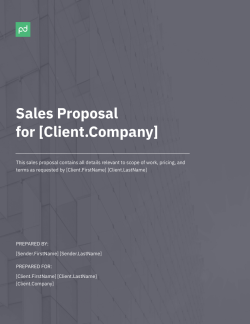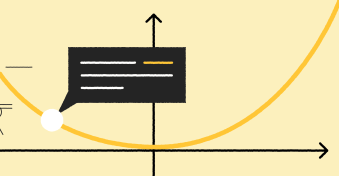A sales proposal is a formal document sent to potential clients.
Its role is to outline the products and services a company is selling and give the prospect more detailed information about the deliverables, benefits, fees, and cost of all services and products promoted.
Since a sales proposal is typically sent near the end of the sales process, the goal of this document is to close the sale by further convincing the client that your solution is the perfect choice for them.
A great sales proposal can be the winning move that converts a prospect into a customer — and all the more reason why a sales proposal should be clear, informative, and engaging.
Keep reading and learn all there is to know. In this article, we will show you how to successfully present your offers to potential customers with a winning sales proposal.
→DOWNLOAD NOW: FREE SALES PROPOSAL TEMPLATE
Key takeaways:
- Careful planning is fundamental to a successful sales proposal. Create a comprehensive outline that serves as a roadmap, ensuring all elements are covered in a coherent, accessible manner.
- Show you understand your prospect’s pain points and challenges by conducting thorough, in-depth research. Present a compelling executive summary that shows you’ve done your homework, and succinctly describe how your solution will solve their problem.
- Emphasize the value your offerings bring by tailoring your proposal to address their specific needs and unique requirements. This includes clearly defining deliverables, being transparent with pricing, and using testimonials, case studies and social proof to further bolster your credibility.
What is a sales proposal?
A sales proposal is an official document that individuals or businesses use to pitch their products or services to prospective customers.
The purpose of sales proposals are to describe how your products or services solve problems, provide pricing information alongside other important details about what your company offers, and — most important — illustrate why you and your team are the best choice for potential clients.
How to format a winning sales proposal
The way you format your proposal will have a big impact on the end result.
We’ll go more in-depth further into the article; for now, let’s get a quick view of what a winning proposal should look like with respect to layout.
Here are 6 components of a successful sales proposal.
Cover letter
In this section, you briefly introduce your company, highlighting its core activities and unique distinguishing factors.
Though it might go without saying, we’ll say it anyway: the cover letter is the initial content your client will encounter, so proofreading is essential (for your entire sales proposal) to ensure there are zero grammar mistakes.
Introduction
In the introduction, provide a brief rundown of the problem in question, your solution, costs, and benefits of working with you and your team. However, don’t make the introduction too long nor go too in-depth (that comes later).
The main purpose of introductions is to give your clients a short glimpse into what’s to come.
Issue
When you’re describing the issue, define it in a concise and understandable manner.
It’s about showing that you understand your customer’s pain points and that your company can meet their needs — and then surpass them.
Solution
Once you get to the solution part, make sure to highlight its importance and provide a solid explanation as to why your solution is the best.
Here, it’s ok to get detailed enough to give step-by-step explanations of how you plan to tackle the issue at hand.
Also, include a timeline for each of your points to give your customers an idea of how long the project will take.
Qualifications
In the qualifications section, briefly describe what kind of experts and personnel you’ll utilize to complete the project successfully.
Conclusion
Lastly, your conclusion should reiterate and summarize your main point (costs and gains/results of your proposal).
At the very bottom, always include contact information and thank the reader for their time.
How can PandaDoc help you draft the perfect proposal?
At PandaDoc, we aim to help you personalize each proposal 100% to the needs of each client.
No two proposals should ever be the same.
The entire process is transparent and streamlined so you can have a well-designed proposal on your hands in a matter of minutes.
To make sure this is possible, we enable you to use:
- Lots of customizable templates that you can edit, save, and personalize to your liking. That way, you ensure that every client gets a different voice and style.
- A Salesforce integration that lets you tap into your CRM and access valuable customer data. Using this integration, you can provide each client with highly relevant information and completely tailored offers.
We asked our Senior Account Executive Artyom Voronetskiy to help us explain how focused we are on providing each client with a personalized experience:
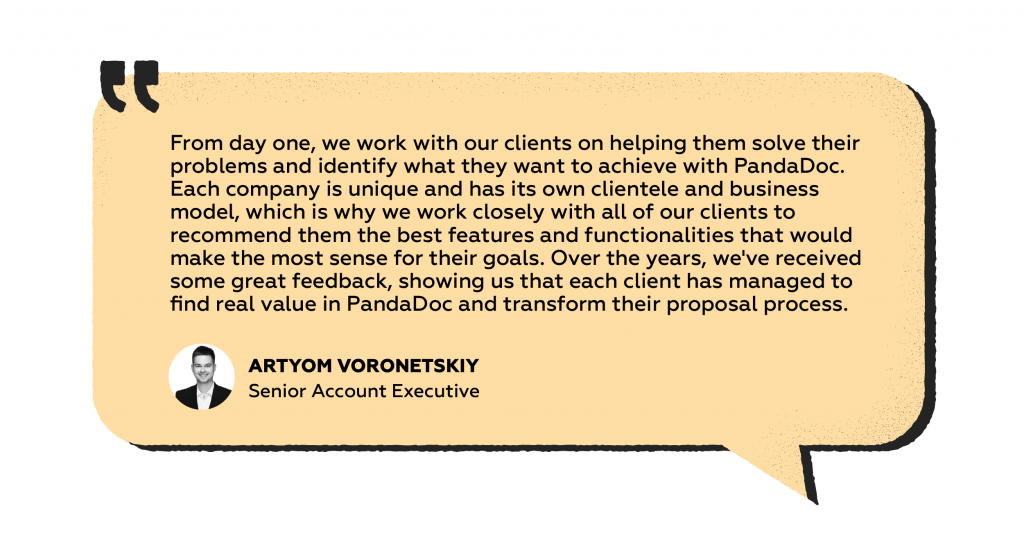
1. Write an outline
As with almost any written content, creating an outline should be your first step when writing a sales proposal.
Think about all the sections that should be included in your proposal and write them down in a strategic, concise manner.
A few effective sentences about each section should be enough — the outline serves as a reminder as to what you’re going to write once you start filling things up with content, defining the purpose of your proposal in small bites and setting clear objectives.
Here are some sections your sales proposal outline needs to have:
- Title page: A neat, engaging title page with basic information about your company and the prospect you’re reaching out to.
- Summary: What your business is all about and what the main benefits are for choosing your products/services. Get into your customer’s problems and set the scene for how your product/service can solve them.
- Market research: Make sure that your product or service actually solves the problem based on market, competitor, and user research. This doesn’t always need to be an independent section but it should definitely find its way into the proposal.
- Deliverables: In this section, go into detail about your objectives and timeline. What are you planning to do and how?
- Value: Demonstrate exactly how your product or service provides value to its users. Be engaging and truly show them that this is something they need. This is the section in which you can start being a little more salesy.
- Cost: Of course, any proposal needs to include pricing. Be flexible and highlight that your prices are susceptible to change, depending on the specific agreement and your prospect’s needs.
2. Define your prospect’s problem
Every prospective client is different, and each has specific needs to be met.
It’s up to you and your sales team to identify those needs and tailor each proposal accordingly.
Sales professionals have been doing this for years and, with the rise of data-based marketing, grasping their pain points and challenges has become even easier.
Here are some ways to identify customer needs and problems using data.
- Use your CRM to inspect any previous conversations and identify specific problems that the prospect has already expressed.
- Use your social media to identify needs and problems to be solved that keep recurring in your business community.
- Use Google Analytics to see which pages, services, and articles people are most interested in.
- Use heat mapping tools to learn more about visitor behavior and interests.
This knowledge, combined with your salespeople’s experience and assessment can give you a good estimate of what each prospective client needs and how their proposal should be tailored.
3. Write an executive summary
Talk to any charity or other nonprofit organization that’s ever answered an RFP (Request For Proposal) and they’ll tell you that the executive summary is one of the most important parts of the proposal that decision-makers often focus on.
The role of an executive summary is to draw the reader in and get their attention early on so that they’ll continue reading the entire proposal with interest.
Think of your executive summary as the gateway to your business proposal, one that must capture the reader’s attention instantly.
Use the summary to give the potential customer a good idea of who you are and how you’ll be able to help them.
Here is an example of a very brief executive summary:
“The Superstar automation platform has been providing marketing automation services in the SaaS industry since 2010. During the past 10 years, we’ve helped more than 1.000 SaaS companies reach their customers with smart, personalized sequences—in record time.
In this proposal, we will outline our plan of collaboration with [client name] in the next [period]. Upon analyzing your business and online presence, our strategy & planning team was able to estimate that we will [improve a specific metric by X].
On the following pages, we will demonstrate exactly how we’re planning to make this a reality.”
→DOWNLOAD NOW: FREE SALES PROPOSAL TEMPLATE
4. Do market research
Market research isn’t something your potential customer will spend a lot of time reading but it serves an important purpose: it shows them you’ve gone the extra mile and you’re well-versed in the industry specifics.
Market research may not require an entire section on its own, but displaying examples of how you’ve leveraged market insights to fine-tune your solution should definitely be sprinkled throughout your proposal.
Demonstrate your industry experience and show you’re familiar with the data to the point that you can provide unmatched service.
Here are some questions to help you conduct market research:
- Who are your prospect’s competitors and what are their activities?
- What is their target audience and what are their needs?
- What are the best-performing channels in the industry?
- Who are the most popular companies in the industry and what are they doing right?
- What market share does your prospect have?
- Which solutions has your prospect been using so far?
Answers to these and many other questions will help you create a successful sales proposal and impress your prospect.
5. Offer the solution
In the eyes of your prospect, this section and the one that follows will be the meat of your entire sales pitch. What are you offering as a solution to their problem and why?
Pay special attention to this section and make sure that your proposed solution(s) outlined here perfectly fits the problems and market research you outlined in the earlier sections.
Highlight the advantages of choosing your proposal over alternatives, with emphasis on the outcomes the client can expect.
Here is an example of a solution section.
For the first six months of our collaboration, we propose the following solutions:
- Managing [client company name] social media pages, including comment moderation, posting and scheduling content, updating profile/cover images, answering messages.
- Promoting social media posts to an agreed target audience, on an agreed budget.
- Generating bi-weekly and monthly social media reports to document our progress and campaigns.
6. Identify the deliverables
Here, we get into details when it comes to specific steps you’ll take and the finished materials and/or results you’ll provide to your potential new customers.
Think of it this way: the Solution and Deliverables sections work together to give your prospect a holistic view of your activities during the collaboration.
While the Solution section serves to give them a poignant, short overview, the Deliverables section takes a more detailed approach.
So, leave nothing to their imagination. This is the place to outline the quantity, frequency, and other aspects of your products or services.
For example, if you’re writing a social media proposal, here is what the deliverables might look like.
List of deliverables:
- 15 Instagram posts delivered on the 25th of the current month for each following month at the latest.
- 12 Facebook posts delivered on the 25th of the current month for each following month at the latest.
- Weekly social media report delivered by Monday of the following week, covering the past 7 days.
- Monthly social media report delivered on the 5th of the current month, covering the past month.
- Four daily inbox and comment checks, answering comments and messages (weekends not included).
This is just an example; you and your sales team can always dig in deeper, identifying jobs to be done and the best ways of fulfilling them.
7. Know your audience
When writing sales proposals, pay close attention to who you’re pitching to.
What do we mean by this? First, you’ll want to explore their company.
Check out their social media (particularly LinkedIn), read the “About Us” section on their website, and get familiar with their mission statement.
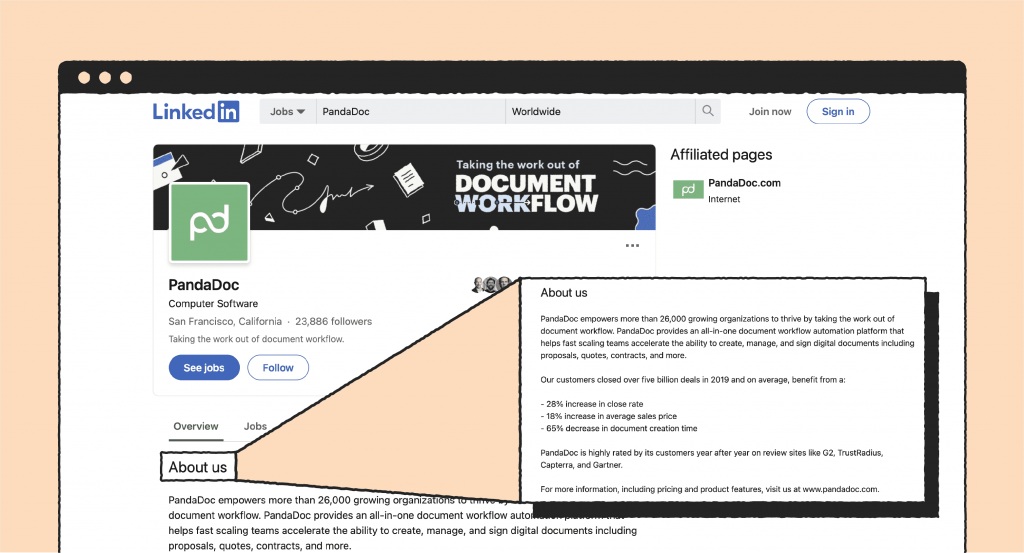
Tailor your language, tone, and approach to resonate with their preferences and values
That way, you’ll know their values and you’ll start understanding their tone of voice.
This will help you adapt your proposal to match their expectations and tailor your language in a way that resonates with them.
Second, don’t be afraid to do some research on the person you’re pitching to.
Personalization can make all the difference in capturing the attention of potential clients and fostering a sense of genuine rapport.
A young HR specialist won’t be familiar with the same terminology as an older social media director.
Similarly, big enterprises will expect a different style of communication compared to small business owners.
8. Be detailed and transparent with pricing
Presenting the price to the customer is often a tricky part, especially when there is a concern about being perceived as too expensive compared to competitors.
A common mistake is to undersell your services, which will compromise your margin.
To avoid this situation, transparency is key.
Clearly communicate the price to the customer and provide detailed descriptions for each product or service you offer.
Avoid ambiguity and hidden fees, as these can lead to misunderstandings and hinder the trust-building process.
By providing a clear justification for the cost of your proposal, your customers will perceive the price as fair and reasonable.
One effective approach is to use pricing tables to present a clear and organized overview of your offerings.
You can easily showcase your products or services from your catalog, provide descriptions, and even create bundled offers for your potential client.
Here is how that might look.
| Service | Qty | Item price | Subtotal |
|---|---|---|---|
| Blog posts | 10 | $80 | $800 |
| Facebook posts | 12 | $20 | $240 |
| Instagram posts | 15 | $20 | $300 |
| Community management | 1 | $200 | $200 |
| Analytics and reporting | 1 | $100 | $100 |
| Total | $1,640 |
9. Don’t forget the CTA
Including a CTA (call to action) in their proposal is something that a lot of businesses forget to do.
But including a smart CTA in your sales proposal methodology could be that one valuable factor that will impact your conversions and close deals more often!
A well-crafted CTA eliminates ambiguity and prompts the prospect to take immediate action, accelerating the decision-making process — and we all know that, in every step of your sales cycle, you should always look to bring the prospect closer to closing the sale.
A good CTA will help you do just that — tell your client what their next step should be and get them that much closer to making a decision.
In a lot of cases, scheduling a meeting or a call can be a good next step after viewing a proposal.
Here are some general tips when it comes to creating a killer CTA:
- Keep it short: The CTA should be a brief, streamlined sentence with a clear goal at the end. No need to turn it into a whole paragraph.
- Think about placement: When people read a block of text or view a page, they seem to focus on certain areas of the page. The Z reading pattern and the F reading pattern are generally accepted as good interpretations of user behavior. Place your CTA somewhere on these lines.
- Use commanding words: Since we’re talking about a call to action, it needs to contain a strong word that motivates the user to do something: schedule, reserve, claim, redeem, etc.
- Make it visual: It’s a good idea for your CTA to visually stand out from the rest of the page, be it by color, font size, or anything else.
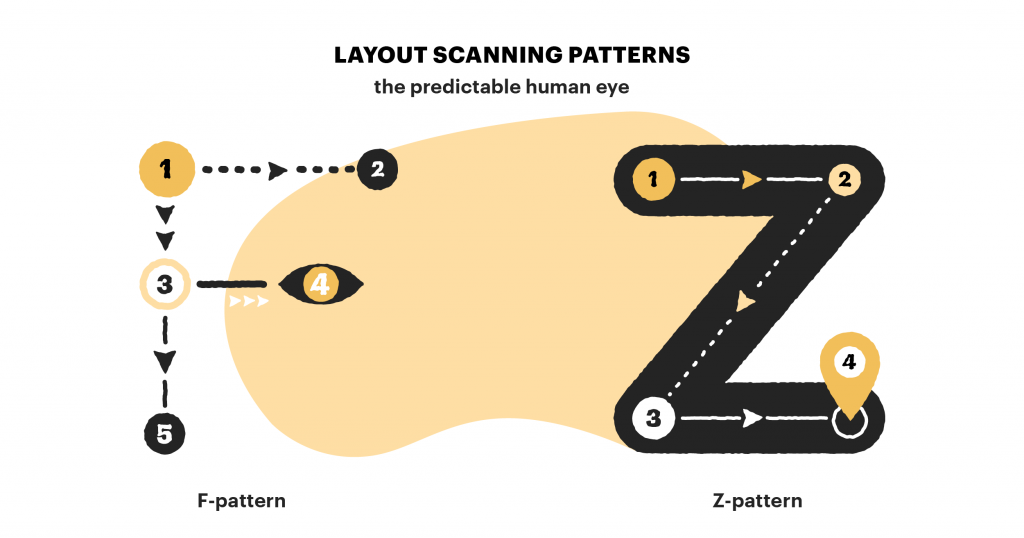
10. Provide social proof through testimonials
A great way to demonstrate to your potential clients that you have ample experience solving similar problems is to add some social proof to your proposal, showcasing positive feedback and success stories from satisfied (and repeat) clients.
People use social proof to inform their decisions all the time — 82% of Americans claim they consult their friends and family and ask for recommendations before purchasing a product.
You can only imagine how powerful word-of-mouth is in the B2B industry, where decision-makers ask each other for recommendations all the time.
Client testimonials, links to case studies, reviews from relevant sources — all of these can be good ways to promote trust.
11. Use templates
Making the best sales proposal is much easier if you have a framework, a template to guide you through the process.
At PandaDoc, we set out to create the best proposal software to help you create visually stunning proposals that will delight your clients and get you more business in no time.
Here are a few templates you might want to consider:
- Sales quote template, perfect for sending pricing plans and getting signatures.
- Sales proposal template, an entire proposal template with space for testimonials, the scope of work, pricing, and other sections.
- Sales agreement template to help you define the nature of your cooperation with the client when it comes to assigning agents and promoting their services.
- Sales contract template, a detailed document with a particular focus on the legal and regulatory rules surrounding the sales agency-client cooperation.
Templates also help you focus on the content and value proposition, ensuring that important details aren’t overlooked in the rush to meet deadlines and create a proposal — saving time while showing your prospects how seriously you take your job!
12. Follow up
Finally, you don’t want to send the proposal and simply wait for the prospect to get back to you.
Follow up via email or phone call — they’ll appreciate you taking the time to contact them and they might even have some questions they were hesitant to ask you.
A prompt, courteous follow-up reflects your dedication and responsiveness, leaving a positive impression on the prospect. (Bonus: It also provides a golden opportunity to further elaborate on the proposal’s strengths!)
Wait a day or two and reach out to the prospect to see if you can help them in any way.
A lot of salespeople hesitate to follow up, which is a mistake since prospects tend to say “no” several times before they finally say “yes!”
Sales proposal examples
There are two main types of sales proposals, which should be tackled in a slightly different manner according to type:
- Solicited sales proposal — the proposal you send after being explicitly requested to do so. This usually happens after getting in touch with a prospective client and agreeing that they’re interested in your services.
- Unsolicited sales proposal — this is like sending cold emails, in that you’re trying to score a client by offering a solution for the problem they have, but you’ve not had any prior contact with them.
Sending solicited sales proposals has a bigger success rate since your client is already considering you.
Unsolicited proposals, on the other hand, require more work and research — potential customers are getting to know you.
To increase the likelihood of receiving a positive response, you can use pre-built sales proposal templates from the PandaDoc content library. These templates not only save you time on formatting but also offer full customization and reusability options.
For example, you can use our UK Sales Proposal Template for your UK clients.
Or, you might want to impress a client who works in IT — try our IT Sales Proposal Template.
Here are some other templates you can find in our massive gallery:
- SaaS sales proposal template
- Product sales proposal template
- Software development proposal template
- One-page sales proposal template
- Hotel sales proposal template
Deliver winning sales proposals with PandaDoc
Writing an effective sales proposal will help you stand out from the competition, build strong relationships and gain the trust of your potential customers.
The key is to understand your customers’ problems and tailor your proposal to their specific needs.
Clearly explain the value and benefits of your offer, emphasizing how it aligns with their goals and objectives.
Make sure your proposal is concise, well-organized, and easy to navigate so your potential customers can quickly access and comprehend key information — increasing the chances of a positive response.
In addition to knowing your audience and outlining solutions and deliverables, be transparent with pricing, and consider using templates to streamline the process while maintaining the utmost professionalism.
Using document management tools like PandaDoc can greatly assist in structuring your sales proposal in a clever and practical manner.
With a wide range of pre-built templates available, or the option to create your own fully customizable offers using the document editor, PandaDoc provides the necessary tools to streamline your proposal creation process.
To experience the benefits firsthand, you can start a free 14-day trial of PandaDoc or contact our sales reps for a complimentary demo.
Disclaimer
PandDoc is not a law firm, or a substitute for an attorney or law firm. This page is not intended to and does not provide legal advice. Should you have legal questions on the validity of e-signatures or digital signatures and the enforceability thereof, please consult with an attorney or law firm. Use of PandaDocs services are governed by our Terms of Use and Privacy Policy.
Originally published May 12, 2014, updated August 17, 2023
